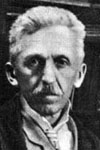Gárdonyi Géza oldala, Angol életrajz
Életrajz
Born August 3, 1863 in Agárdpuszta; died October 30, 1922 in Eger. Novelist, short-story writer, dramatist, poet. Father, Sándor Ziegler, an engine-fitter in Vienna, returned to Hungary in 1848 on hearing of Revolution. Gárdonyi began studies in Sály. Entered gymnasium of Református Kollégium in Sárospatak in 1874 but left in February 1875 for Reformed gymnasium in Budapest. Registered at Catholic teacher-training institution in Eger in 1878. Became assistant teacher and choir master in Karád in 1881. Received teaching certificate in 1882. Became assistant teacher in Devecser in 1883, Sárvár in 1884, and Dabrony in 1885. Contributed to Hazánk in Győr in 1885 and to Győri Közlöny 1885-1888. Published Tanítóbarát and Néptanítók Naptára 1886-1888. Moved from Győr to Szeged in 1888. Edited Szegedi Híradó 1888-1889 and Szegedi Napló 1889-1891. Left Szeged for Arad in summer 1891 and worked on staff of Arad és Vidéke. Moved to Budapest in December 1891. Joined editorial staff of Magyar Hírlap in 1892, and name gradually became known. Moved to Eger in 1897, where he devoted energies solely to writing. Visited Paris in 1900, and Italy, Switzerland, Austria, and Turkey on other occasions. Member of Petőfi-Társaság and Kisfaludy-Társaság in 1903; corresponding member of Academy in 1910, honorary member in 1920. Also member of Dugonics-Társaság and, because of Dante translation, member of the Unione Operaia Umberto I de Napoli and Reale Accademia la Stella d'Italia. Awarded prize in contest conducted by Le Journal in Paris for "Mari néni meg a Pista bácsi," a short story, in 1899.Used nearly all literary forms. Very popular during lifetime, and many writings are still being read, especially by children. Realist with romantic overtones. Simple style with ability to characterize and dramatize. Researched materials for writings. Short stories and social novels important, but historical novels were most significant for their reconstruction of Hungarian past and for their grasp of inner spirit of earlier times. Most of his works use village life as their theme, and even historical novels give attention to peasants. Works generally considered to be most lasting: A láthatatlan ember, ahistorical novel; A bor, a play; and Az én falum, stories and sketches.
A bor has been translated into Finnish, Italian, Polish, and Rumanian; Az a hatalmas harmadik into Croatian, French, Italian, and Turkish; Két katicabogár into Dutch, Esthonian, Finnish, German, Spanish, and Tutkish; A láthatatlan ember into Bulgarian, Dutch, Esthonian, Finnish, German, Spanish, and Turkish; Annuska into German; Egri csillagok into Bulgarian, Esthonian, Finnish, German, Russian, and Slovakian; Isten rabjai into Italian; and some of his short stories and poems into Bulgarian, English, French, German, Italian, Polish, Portuguese, Russian, Slovakian, and Swedish.
Hungarian Authors. A Bibliographical Handbook by Albert Tezla




